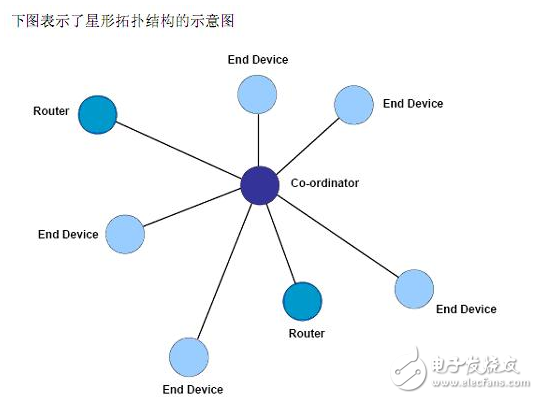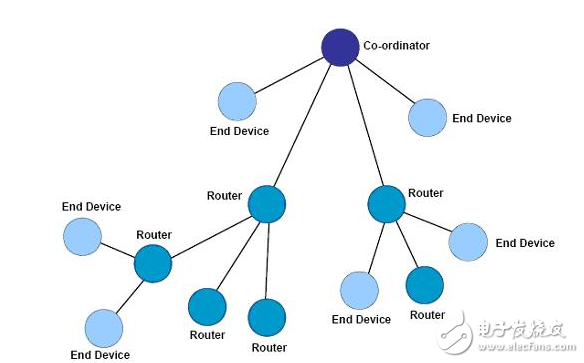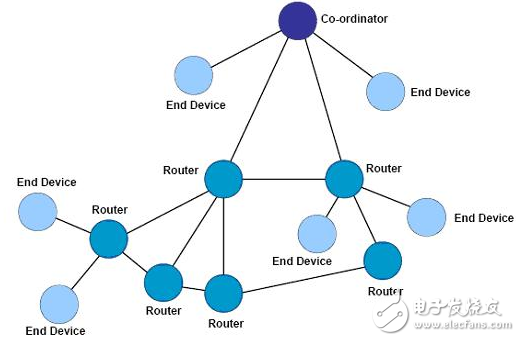As a short-range, low-power, low-data-rate wireless network technology, zigbee is a technology solution between wireless tag technology and Bluetooth. It is widely used in sensor networks and other fields, thanks to its powerful The networking capabilities can form three zigbee networks: star, tree and mesh. You can choose the appropriate zigbee network structure according to the actual project needs. The three zigbee network structures have their own advantages. The star topology is the simplest form of topology. It consists of a Co-ordinator node and a series of End Device nodes. Each End Device node can only communicate with the Co-ordinator node. If you need to communicate between two End Device nodes, you must forward the information through the Co-ordinator node. The disadvantage of this form of topology is that there is only one path to the data route between nodes. Co-ordinator (coordinator) has the potential to become a bottleneck for the entire network. Implementing a star network topology does not require the use of zigbee's network layer protocol, since the IEEE 802.15.4 protocol layer itself has implemented a star topology, but this requires developers to do more work at the application layer, including processing information themselves. Forwarding. The tree topology includes a Co-ordinator and a series of Router and End Device nodes. The Co-ordinator connects a series of Routers and End Devices, and the routers of its child nodes can also connect to a series of Routers and End Devices. This can repeat multiple levels. The structure of the tree topology is shown below: have to be aware of is: Co-ordinator and Router nodes can contain their own child nodes. End Device cannot have its own child nodes. a node with the same parent node is called a sibling node a cousin node between nodes with the same grandparent node Communication rules in a tree topology: Each node can only communicate with its parent and child nodes. If you need to send data from one node to another, the information is passed up the path of the tree to the nearest ancestor node and then down to the target node. The disadvantage of this topology is that the information has only a single routing channel. In addition, the routing of information is handled by the protocol stack layer, and the entire routing process is completely transparent to the application layer. The Mesh topology (mesh topology) consists of a Co-ordinator and a series of Router and End Device. This network topology is the same as the tree topology; please refer to the tree network topology mentioned above. However, the mesh network topology has more flexible information routing rules, and direct communication between routing nodes is possible when possible. This routing mechanism makes information communication more efficient, and means that once a routing path has a problem, the information can be automatically transmitted along other routing paths. A schematic of the mesh topology is as follows: Generally, in supporting the implementation of the mesh network, the network layer provides a corresponding route discovery function, which enables the network layer to find an optimized path for information transmission. It should be noted that the above mentioned features are implemented by the network layer, and the application layer does not need any participation. The network of MESH mesh network topology has powerful functions. The network can communicate by means of “multi-level hoppingâ€; the topology structure can also form an extremely complex network; the network also has self-organization and self-healing functions; Star and family tree networks are suitable for applications with many points and relatively close distances. SMD Electric Power tansformer ,POE transformer ,EP7 SMD tansformer ,EP13SMD tansformer,EPD SMD tansformer IHUA INDUSTRIES CO.,LTD. , https://www.ihua-sensor.com


November 21, 2024